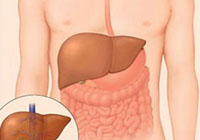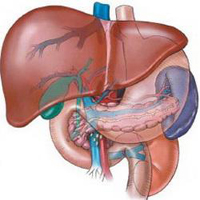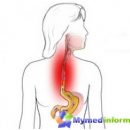What is fat hepatosis? What are the causes of fat hepatosis? How does the diagnosis and treatment of fat hepatosis?
Content
Hepatosis
Fat hepatosis (steatosis), steatohepatitis - liver disease, characterized by excessive deposits in the liver of adipose tissue with impaired liver function and possible outcome in cirrhosis. As you know, the liver is one of the main bodies involved in lipid metabolism.
The accumulation of fat in hepatic parenchymal cells is often a liver reaction to various exogenous and endogenous intoxication (toxic effects). Sometimes this process is associated with some diseases and pathological conditions of the body (for example, with starvation).
Causes of fat hepatosis
The most likely reasons for the development of fat hepatosis are: diseases of gastric and biliary tracts, obesity, bypass intestinal anastomosis, long-term parenteral nutrition, type 2 diabetes, syndrome of maldigesty and malabsorption, gluten enteropathy, Wilson-Konovalov disease and some other genetically determined diseases, chronic alcoholic intoxication, some medicines (corticosteroids, estrogens, tetracycles, etc.), bacterial infections, viruses, systemic diseases and a number of other diseases and states (strict vegetarianism and others.).
Diagnostics, Hepatosis Treatment

Despite the fact that with fatty hepatosis, the functional state of the liver is certainly reduced, using traditional laboratory tests to confirm these violations is almost impossible. Taking into account etiology, patients often detect certain subjective and objective symptoms associated with the main disease. For example, liver fatty dystrophy, developed due to chronic alcohol intoxication, is often characterized by anorexia, shortness of breath and other symptoms. The clinical course of the fattest hepatosis is usually asymptomatic. Sometimes there are complaints in patients with heaviness and discomfort in the right upper abdominal quadrant, increasing when driving. The liver at fat hepatosis is more commonly increased.
With ultrasound, the echogenicity of the liver tissue at fat hepatosis is more likely to be normal and sometimes elevated, but these changes are difficult to distinguish from fibrosis and even liver cirrhosis. Only computed tomography (CT) and magnetoresonance tomography make it possible to identify fat infiltration of liver in some cases. With the help of these methods, the focal fatty infiltration of the liver is better recognized.
But even in these situations, the diagnosis is confirmed only by the sighting liver biopsy under the control of computed tomography.
Justify and systematize the treatment of fatty hepatosis in such a variety of causes, it is rather difficult. Therapy should be aimed at eliminating the reasons for the relief of impaired digestion and suction syndromes, to restore the liver function and biliary system. This eliminates the reception of some drugs and alcohol abuse.









